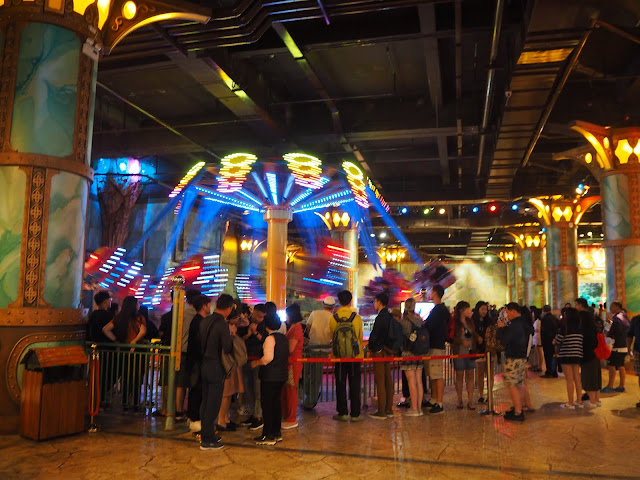 Two days ago, I received a surprise invitation to dinner. The former women's world chess champion, Xu Yuhua, was in town, the invitation from Swee Sie said. Swee Sie is the president of the Penang Chess Association. And she told me that Hamid had told her that I would know Yuhua.
Two days ago, I received a surprise invitation to dinner. The former women's world chess champion, Xu Yuhua, was in town, the invitation from Swee Sie said. Swee Sie is the president of the Penang Chess Association. And she told me that Hamid had told her that I would know Yuhua.I was hesitant. Me knowing Yuhua? Why, that was a long time ago. A very long time ago. In fact, 21 years ago. I very much doubted that Xu Yuhua, a former women's world chess champion who had conquered the world stage in 2006 and met with hundreds, if not thousands, of talented chess personalities, would remember me.
In 1998, she was one of many budding new talents from China, all eager to follow in Xie Jun's footsteps (see Note #1 below). Yuhua had arrived in Malaysia to play in the Asian women's chess championship that would be held at the Awana in Genting Highlands from the eighth till the 22nd of April. Representing China, of course. I had been offered the chance to be the Deputy Chief Arbiter at this event. The Chief Arbiter was around but he would be leaving it to me to run the whole tournament with no interference. So technically, I was in charge. Yuhua played masterfully and was crowned as the Asian women's chess champion at the age of 21. She was awarded the Indira Gandhi Trophy. That was basically the first time I met her (see Note #2 below).
So there I was at the New CRC Restaurant in Pangkor Road. I walked in and immediately saw Swee Sie with three of her committee members, Eng Seong, Eu Hong and Lake Khee. "Hello, do you remember me?" I asked Yuhua as we shook hands. Awkward smile that conveyed the answer, "no".
Never mind, I can always show her something to jog her memory. Whipping out my mobile, I showed her this digitised picture from 1998. A picture of her and me....and Phan Ngan Koshnitsky. Phan Ngan was another participant in the Asian women's tournament. She's Vietnamese but living in Australia where she had married the son of Evelyn Koshnitsky, one of Australia's most well-known promoters of women's chess from the 1970s and continuing well into the 1990s.
Yuhua let out a laughter, almost a muffled scream. Thrilled, I could see. Then I showed her a second picture that was taken at the closing ceremony of the tournament. A shot of all the participants together. As the Arbiter, I had squeezed myself into the frame. The only Beauty(?) among the Beasts(?).
So the ice was broken. Everyone started relaxing and dinner proceeded smoothly, lasting for about two hours before we all broke up happy. I hope that I won't have to wait another 21 years before meeting her again.
The next morning, I learnt that Yuhua had sent the pictures back to her dad in China. And her dad had responded by writing a poem to extol the lasting friendship between the chess players of Penang and China. I tried to use Google Translate so that I could understand the poem in English but Google made such a mess out of it that nothing read logically at all. I shall reproduce the poem below in case there are good Samaritans who can provide a good, easily understandable translation. Good luck!
Note #1: Xie Jun was the first women's world champion from China. She won the title in 1991 from Zsuzsa Polgar who was then from Hungary. Xie Jun held the title until 1996. At that time, the women's world title was a close tussle between Xie Jun and Zsuzsa Polgar. In fact, it was Polgar who won back the title in 1996 before relinquishing it again to Xie Jun in 1991. Zhu Chen was the second Chinese player to be the women's world champion from 2001 to 2004. And Xu Yuhua was the third Chinese women's world champion from 2006-2008. After Xu Yuhua were Hou Yifan (2010-2012, 2013-2015 and 2016-2017), Tan Zhongyi (2017-2018) and presently Ju Wenjun (since 2018). Very much a Chinese stranglehold on the title nowadays.
Note #2: In those days, I was also doubling up as the webmaster for the tournament website: one of the first few chess tournaments in the world to have a presence on the Internet. Nothing sophisticated, of course, but it was still a website. I had it hosted on Geocities, now defunct. But the tournament website can still be viewed here.

















































